Some dogs house train themselves; other dogs need our help being convinced it is more pleasant to do their business outside than on our Persian carpet.
For a dog, pooping and peeing is just another behavior, like begging at the table or hanging around my horses. Like with any behavior, they will repeat it if it ends in a good result and avoid it ONLY if it ends in a less-than-good result. If you feed your dog table scraps when he begs at the table, he will continue to beg. If one of the horses on the farm kicks out, he will avoid that horse in the future.
Some puppies are born with a fastidious nature. These are the puppies that naturally find pooping and peeing in the house distasteful – because they don’t like the smelly result. Voila! You have a puppy that asks to go outside when he needs to relieve himself, and can be trusted to hold it all day until you return to let him out! These puppies practically house train themselves, though you take all the credit.
Other puppies aren’t so prissy. They find the immediate relief from using your floor as a toilet to be gratifying, comfortable, and worth repeating. Dogs find more pleasure in relief than they find displeasure in the stink. So how do you house train a puppy that doesn’t care? You help him to care. House training means a dog will actively work to avoid messing in the house, whether or not you are there to let him out. Taking puppies outside every hour is not house training dogs!
Like with any other behavior that you want your dog to avoid, you will need to make messing in the house less pleasant for the puppy. Only when a dog finds a behavior unpleasant from his perspective will he stop or avoid it. Just because you consider piles of stinky dog poop on your floor offensive doesn’t mean your puppy feels the same. If he did, he’d be asking to go outside. From that dog’s perspective, putting it there felt good! We need to change that.
1. First, crate train your puppy. You can use either a solid-style crate, or a more open, wire style. Both will teach your dog to accept being confined to his own space and help prevent accidents when you are not paying attention. Because dogs are naturally “den” animals, puppies take readily to being crated and soon even seek out their crates for resting and quiet time. Crate training will be an important element in your house training program now, and in managing your dog in other ways later on. Never use the crate as punishment. Think of it as a playpen in which you can put your puppy when you cannot supervise him. A crate trained dog is a dog that’s easy to live with.
2. While he is crated, your puppy cannot mess on your floors, so you can take a shower, work or go to the store without worrying about what you’ll find later.
3. When your puppy is out of his crate, he should have a leash dragging from his flat collar and you need to watch his every move. Never take your eyes off of him. If you need to focus on something else, put your puppy back in his crate. When he attempts to piddle or poop indoors, lob a penny can to land where he is doing his business*. He will think the trolls under the carpet barked at him! You have just made the result of pooping or peeing inside the house “unpleasant”. You’re halfway there!
4. You quickly “rescue” your little one by taking his leash and walking him outside to an acceptable potty area. Praise him softly if he finishes his business. You have made it more pleasant to be outside when Nature calls.
5. Crate your puppy for up to four hours at a time, as well as overnight. You can have a life, your puppy will develop the ability to “hold it”, and if you can catch and correct him “in the act”, you’ll be on your way to a well-house trained dog!
6. You’ll know that you have successfully house trained your dog when he begins to whine or stand by the door when he needs to “go”. You can then try leaving him alone in the house for increasing periods of time, from just 30 minutes to several hours. The naturally fastidious dog will be able to handle that time alone responsibly. You can eventually be gone up to eight hours or more with that kind of dog. The dogs that don’t care, however….probably best to crate them or let them hang out in a dog run if you have to leave for any considerable length of time. If you are not there to open the door, they tend to exercise Option B – going on the carpet.
And that’s “the scoop” on successfully house training dogs … You’re welcome!
-Diva
* You can make your own penny can (or training can) by putting 15 pennies in an empty soda can and covering the hole with duct tape. If you want something more attractive and sturdier, I sell professional training can kits – with instructions – through my business. Call to order: (707) 762-6111.

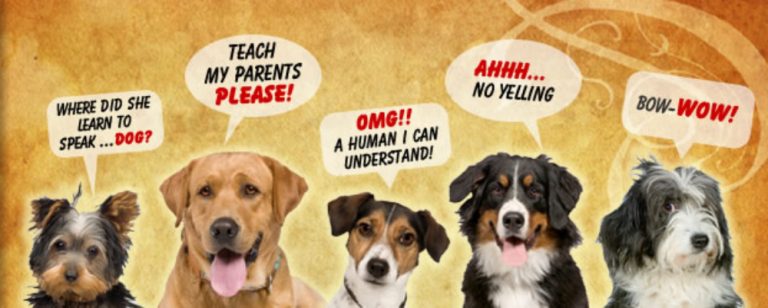
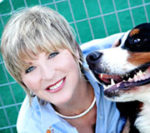

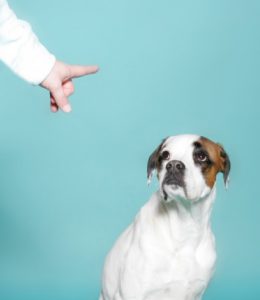

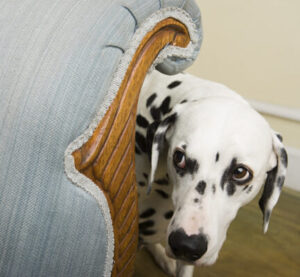


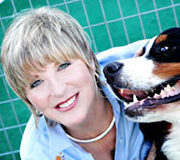

5 Responses
I have a 2 year old Black Mouth Cur that I adopted. She lived outside in a kennel her whole life and I am know trying to make her a indoor/ outdoor family dog. One problem she is not house trained, she has a crate that she does well in and has no problems. We have had her for about a month. She seems to have an accident once every 5-7 days. Every time we think she is getting it she pees in the house. I was wondering if there is a “The Scoop” for teaching old dogs new tricks 🙂
Gabriel:
The process for housetraining an older dog is exactly the same as training a puppy: Supervise or confine. The process may take a little longer with an older dog, however.
While you are supervising you are ready with appropriate consequence. (I use a well-placed lob of my training can when my dog starts to eliminate inappropriately.)
Until your dog is actively requesting to go outside to do her business (whining, standing by the door, etc.), she is not housetrained, and cannot be trusted to roam about your home unsupervised. It sounds like you have allowed you girl household freedom before she has really earned it. Plan on this taking up to several months, and do not leave her to roam your house when you are gone. When you leave, crate or kennel your dog.
Hope that helps!
-Diva
Camilla,
That does help, we do keep a close eye on her and never leave her alone unattended.
The main issue is that when we put her outside to relieve herself she will not go, she just sits outside the door. Even if you lead her to an appropriate area with a leash it is difficult to get her to go. Than she will come back inside and pee shortly after… Is there a trick to get her to go outside when we put her out?
Thanks for the other advise! Good to know that it may take longer
Gabriel:
The secret to housetraining is CRATING. I crate for at least 3 ot 4 hours at a time. When the dog is let out of their crate, they really have to “go!”, which makes catching them in the act easy, if they do not ask to go outside themselves.
If your dog does not relieve herself outside when given the opportunity, SHE GOES BACK IN HER CRATE FOR ANOTHER 3 HOURS. That’s one secret to getting her to do her business when asked.
The other trick is to use a paper match as a suppository, lubricating the tip and inserting it in the ‘business-end’ of your dog. Within minutes, any pending solid waste will be eliminated. Voila!
-Diva
Camilla,
I have a 1 year old black mouth cur, I’ve had her for a few months. She was a rescue off the street, she follows me everywhere and does good when im home but when im not she pees/poops in the house or on the beds and she tears things up. I would crate train her but im temporarily living with someone who isn’t aloud to have dogs so when shes in the crate she cries and my roommate lets her out for fear of someone hearing her and I cant put her in the backyard because my roommate is afraid our landlord will show up and see or hear her back there.. I don’t want to get rid of her and I don’t know what else to do.